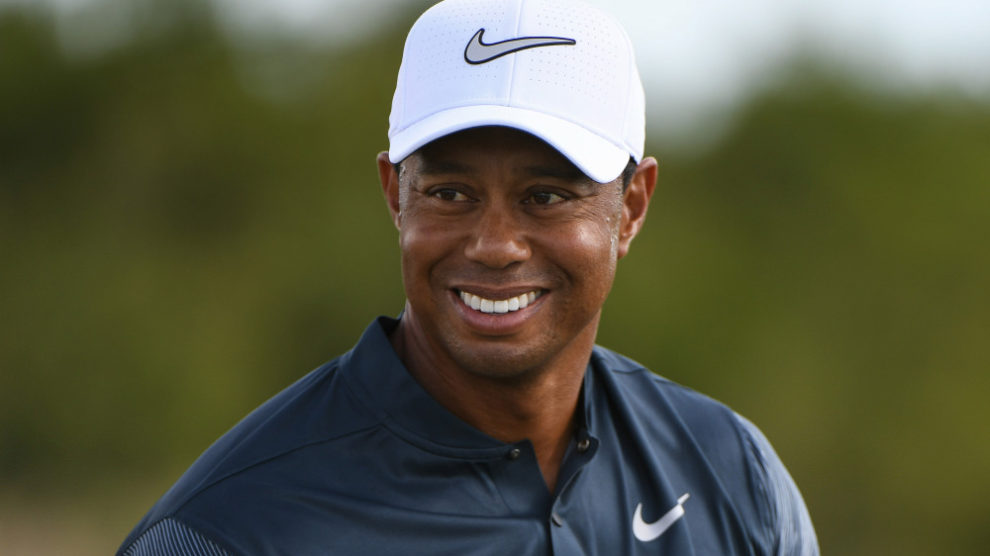The PGA Tour and a large chunk of its players want to get back to something resembling a normal finish to their season.
That's why the Tour released an aggressive revised 2020 PGA Tour schedule and announced an equally ambitious fall portion of the 2020-2021 PGA Tour schedule to give players and fans a docket of golf that would run from June 11 through the first full week of December. It's a lot of golf, including 14 tournaments in 13 weeks that would lead to a FedEx Cup winner at the Tour Championship on Labor Day Monday in September.
The Tour announced the revised schedule some two months before the season is set to resume at the Charles Schwab Challenge in Ft. Worth, Texas -- a state whose governor and lieutenant governor have publicly shared their hankering for life to resume as it was.
While critics of the plan are deeply skeptical of a June resumption, the Tour is trying its best to put into place precautions knowing what we know now and anticipating what might be possible almost two months from now.
The Tour has said the resumption of its season is entirely contingent upon the availability of widespread testing, including for its players, caddies, officials and others who might be on tournament site.
"We need to have widespread, large-scale testing across our country," PGA Tour commissioner Jay Monahan said recently to NBC Sports. "We're going to need to be able to test players, caddies and other constituents before we return, but we need to do so in a way that's not going to take away from the critical need that we're currently facing. And we feel confident, based on the advice that we're getting from medical experts, that we'll be in that position."
Fans won't be on the grounds for the first four events on the announced revised schedule, but that doesn't mean venues will have a complete lack of people on them.
A reasonable estimate would suppose 700 people will need to be on a property each day. At the outset, fields will have 144 or 156 players. Each player would have a caddie, doubling the figure to 288 or 312 people. Between PGA Tour rules officials, media officials, TV and radio broadcast personnel and others -- including some who might be running the ShotLink data-tracking program instead of volunteers, who are predominantly older and part of at-risk groups -- now we're in the 250-300 person range. Throw in some other media that could attend.
All of those people will need to be tested on a daily basis to make sure they can be on the grounds and not in quarantine.
The Guardian reported the PGA Tour is looking at acquiring 1 million tests to satisfy the need between the June restart and the Tour Championship in September. That figure is eye-popping, and the number created a bad optic for the Tour at a time when approximately 4 million Americans have been tested for coronavirus.
However, for the initial four events, the Tour is probably looking at needing under 20,000 tests. Consider that each person on site must be testing each day, from Tuesday through Sunday. With Tuesday and Wednesday as practice days (pro-ams seem risky, so we're excluding them from a potential count) and Thursday and Friday as full-field tournament days, there will be four days with the maximum number of people on site. After a weekend cut to the top 65 and ties, the player-caddie count is likely more than halved.
What would drive the Tour's testing needs dramatically higher -- closer to that 1 million figure -- is having fans at the nine remaining tournaments they run. (The PGA Championship is conducted by the PGA of America but part of the schedule.) Right now, that seems a risky and unlikely proposition without a national program of widespread testing that's at least triple the daily testing regimen being conducted today. A testing-and-tracing regimen would require frequent testing for both the virus and antibodies, looking to identify those who are infected and clearing those who have developed some form of immunity. However, that's a long way from now, and the country is still struggling to produce and process the volume of tests that could enable a return more akin to normalcy.
Another potential snafu is the accuracy of rapid testing. The Food and Drug Administration has lowered or outright removed hurdles to bringing a variety of tests to market, including tests which deliver results in as soon as a few minutes. While those tests have been approved, the streamlined process poses issues.
What are some potential issues with the Tour's testing plans?
For full access to our analysis (and to go ad-free), sign up for GNN Plus now!
[mks_button size="large" title="BECOME A MEMBER NOW" style="squared" url="https://thegolfnewsnet.com/gnn-plus" target="_self" bg_color="#dd3333" txt_color="#FFFFFF" icon="" icon_type="" nofollow="0"]
(Active members, sign in here.)

